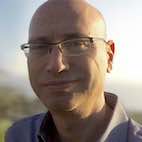Concentration Camps
When the Nazis took power in Germany in 1933 they began a systematic campaign to eliminate political opposition, which was later expanded to include all the people the party conceived of as “undesirables”. That included Jews, Roma, Sinti, homosexuals, the mentally infirm and others. Toward this end they established about 20,000 concentration camps, where the victims of the regime were subjected to the most brutal treatment. The effort to exterminate the entire Jewish people is called The Holocaust.
Life and Death in the Concentration Camps
Living conditions in the German concentration camps was generally appalling, but the Germans definitely made living conditions different depending on the type of inmates imprisoned there. Thus, German political prisoners were treated better than Poles, who in turn were treated better than Jews. The latter were subjected to inhuman treatment. The strongest were selected for forced labor, a role which usually extended their life expectancy by a few months.
“Certain concentration camps were death factories, built as special-purpose extermination camps where the victims were selected for extermination on arrival.”

Certain concentration camps were death factories, built as special-purpose extermination camps where the victims were selected for extermination on arrival. All the death camps were located in Poland. They were Belzec, Majdanek, Chelmno, Treblinka, Sobibor and Auschwitz-Birkenau. Of those, Auschwitz-Birkenau was the largest and deadliest of the 20,000 concentration camps established by the Germans during World War II. Millions of Jews were murdered in these concentration camps, mostly in gas chambers, but many died of starvation, disease, brutal treatment, exposure, executions and “medical” experiments.
Want to stay informed about the topic?
Subscribe below.

